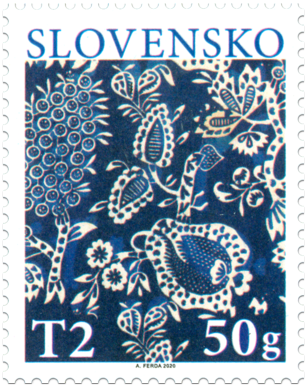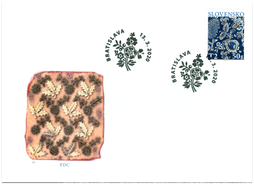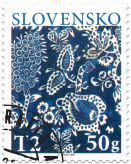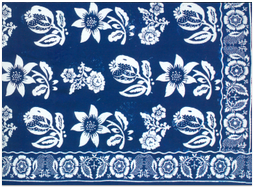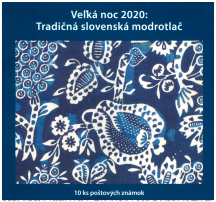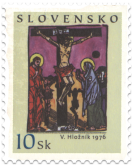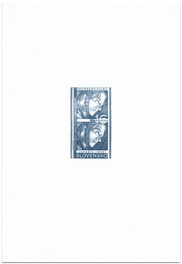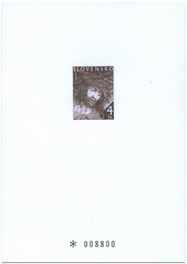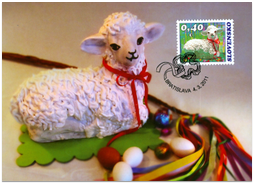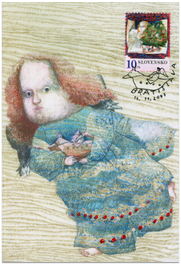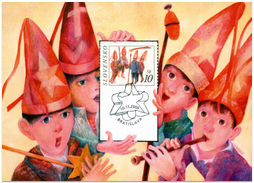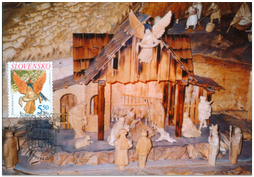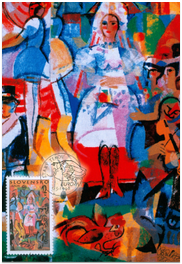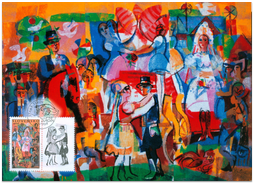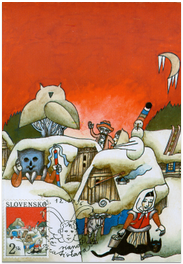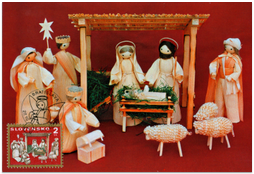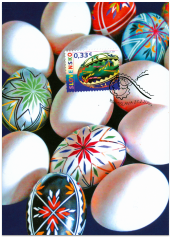708 Date of issue
13.03.2020 Face value
1.20 €
The historical development and technical secrets of blueprint cloth production were described as early as 1954 by Josef Vydra, a renowned ethnographer and employee of the Centre for Folk Art Production (ÚĽUV), in his book Ľudová modrotlač na Slovensku (Folk Blueprint in Slovakia). In it, he speaks about the historical development of the use of indigo to dye cloths, throughout the world, Europe and in Slovakia. In Slovakia, blueprint cloth became popular among wide sections of the population at the end of the 18th century, especially in small towns. From there it penetrated into the countryside, where blueprint craftsmen began to settle from the mid-19th century. A specific service provided by the countryside blueprinters was the adaptation of their production to the tastes of their customers from the specific regions, thanks to which today we are able to admire the precious regional variants of blueprint patterns.
It is the patterns that give the blueprint cloth its character. In traditional production they were applied by hand with the help of wooden forms which were either all-wood (most often made from pear tree wood) or with hammered-in wires and small metal strips. The production of these was the domain of either specialised woodcarvers or even the blueprinters themselves.
The forms were coated with clay, called “rezerva” or “pap”, which prevented the penetration of dye in the area covered by it. The intensity of the blue as well as the variation of the patterns was produced by repeatedly submerging the cloth into a cold indigo solution, called “kypa”.
The technical processes of blueprint dying are of course much more complicated than that. The mastery of a blueprint craftsman could be judged on the basis of the homogeneity of the hue of the dyed cloth. We can find more detail in the abovementioned work of Josef Vydra, although today it is a hard-to-come-across rarity. However, people with an interest in this area of our traditional visual culture can peruse the publication Modrotlač na Slovensku (Blueprint in Slovakia) by the renowned ethnologist Oľga Danglová. In 2014 it was published by the ÚĽUV, which, this year, celebrates its 75th birthday.
Tomáš Mikolaj
The Centre for Folk Art Production
Show lessSimilar products
392 Date of issue
15.03.2007
015 PT 091 / 96 Date of issue
15.05.1996
031 PT 204 / 00 Date of issue
15.02.2000
088 CM 492/11 Date of issue
04.03.2011
074 CM 411/07 Date of issue
14.11.2007
069 CM 387/06 Date of issue
10.11.2006
048 CM 276 / 02 Date of issue
08.11.2002
020 CM 149 / 98 Date of issue
05.05.1998
021 CM 149 / 98 Date of issue
05.05.1998
013 CM 106 / 96 Date of issue
05.11.1996
009 CM 081 / 95 Date of issue
27.10.1995
080 CM 450/09 Date of issue
27.02.2009
© 2025 POFIS - Postal philatelic service. All rights reserved

